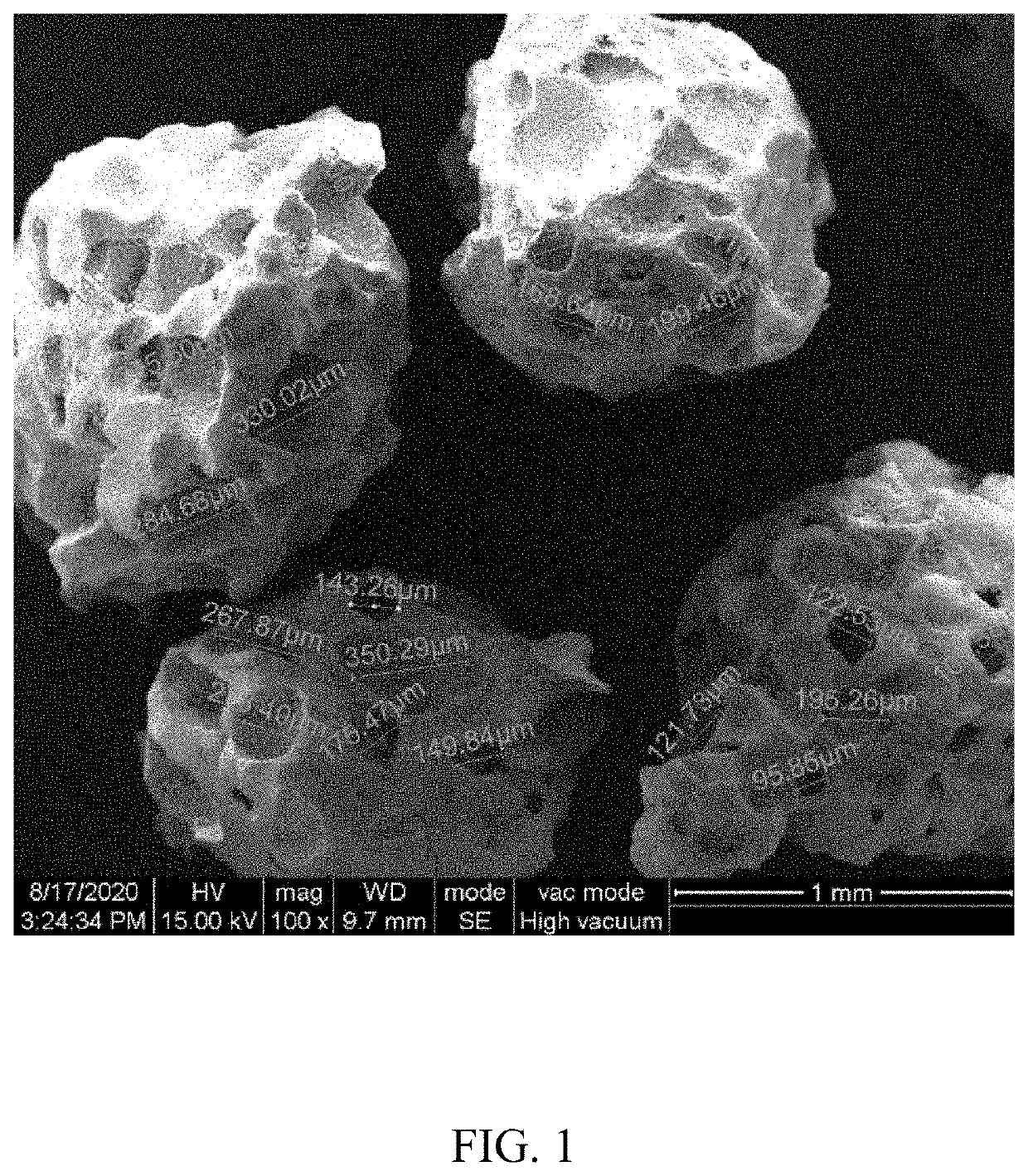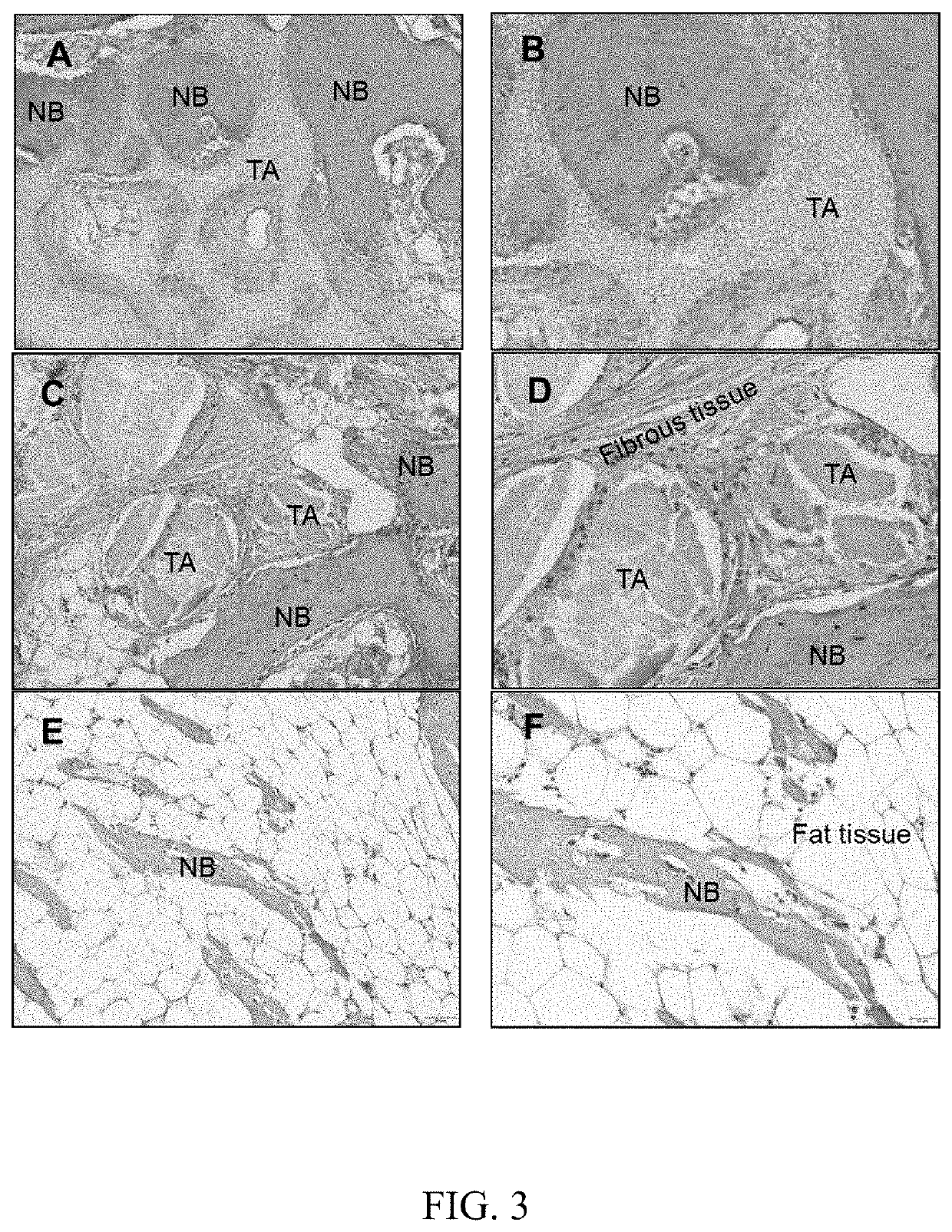Bone implant composition
a technology of bone implants and compositions, applied in the field of bone implants, can solve the problems of insufficient adhesion between the implanted synthetic bone graft and the new bone cells, the risk of inducing inflammatory or rejection response, and the risk of inducing inflammatory or rejection response, and achieves the effect of stable and supportive structure and great biocompatibility
- Summary
- Abstract
- Description
- Claims
- Application Information
AI Technical Summary
Benefits of technology
Problems solved by technology
Method used
Image
Examples
embodiment 1
[0017
[0018]All carriers were mixed in 70° C. water bath and then ceramic particles were added. Mixture comprised by weight ratio of 50% ceramic particles and 50% carriers was mixed and stirred for 10 minutes and then cooled to room temperature. Wherein, ceramic particles were comprised by whole weight ratio of 40% tricalcium phosphate and 10% bioactive glass. The weight ratio of tricalcium phosphate and bioactive glass was 1:0.25. The tricalcium phosphate particles were prepared by above process having about 0.2˜3 mm diameter and greater than or equal to about 70% porosity. The carrier was comprised by whole weight ratio of 15% glycerol, 25% polyethylene glycol (PEG), 5% carboxymethyl cellulose (CMC) and 5% water.
[0019]Revised from the method mentioned in the reference paper “R. Cross, “Elastic and viscous properties of Silly Putty”, Am. J. Phys. 80, 870-875 (2012)”, a test method was developed to verify the elasticity and viscosity of the final product. A universal materials testin...
embodiment 2
[0021
[0022]All carriers were mixed in 70° C. water bath and then ceramic particles were added. Mixture comprised by weight ratio of 55% ceramic particles and 45% carriers was mixed and stirred for 10 minutes and then cooled to room temperature. Wherein, ceramic particles were comprised by whole weight ratio of 15% tricalcium phosphate and 40% bioactive glass. The weight ratio of tricalcium phosphate and bioactive glass was 1:2.66. The tricalcium phosphate particles were prepared by above process having about 0.2˜3 mm diameter and greater than or equal to about 70% porosity. The carrier was comprised by whole weight ratio of 20% glycerol, 23% PEG, 2% CMC and 0% water.
[0023]Elasticity and viscosity of the bone implant composition produced by this embodiment 2 was verified through the test method illustrated in the embodiment 1. Compressive modulus of the specimen of this embodiment 2 was 0.11 MPa, and it had a soft texture, could be easily shaped, and had excellent handleability durin...
embodiment 3
[0024
[0025]All carriers were mixed in 70° C. water bath and then ceramic particles were added. Mixture comprised by weight ratio of 55% ceramic particles and 45% carriers was mixed and stirred for 10 minutes and then cooled to room temperature. Wherein, ceramic particles were comprised by whole weight ratio of 45% tricalcium phosphate and 10% bioactive glass. The weight ratio of tricalcium phosphate and bioactive glass was 1:0.22. The tricalcium phosphate particles were prepared by above process having about 0.2˜3 mm diameter and greater than or equal to about 70% porosity. The carrier was comprised by whole weight ratio of 18% glycerol, 25% PEG, 2% CMC and 0% water.
[0026]Elasticity and viscosity of the bone implant composition produced by this embodiment 3 was verified through the test method illustrated in the embodiment 1. Compressive modulus of the specimen of this embodiment 3 was 0.512 MPa, and it had a soft texture, could be easily shaped, and had excellent handleability duri...
PUM
| Property | Measurement | Unit |
|---|---|---|
| diameter | aaaaa | aaaaa |
| porosity | aaaaa | aaaaa |
| diameters | aaaaa | aaaaa |
Abstract
Description
Claims
Application Information
 Login to View More
Login to View More - R&D
- Intellectual Property
- Life Sciences
- Materials
- Tech Scout
- Unparalleled Data Quality
- Higher Quality Content
- 60% Fewer Hallucinations
Browse by: Latest US Patents, China's latest patents, Technical Efficacy Thesaurus, Application Domain, Technology Topic, Popular Technical Reports.
© 2025 PatSnap. All rights reserved.Legal|Privacy policy|Modern Slavery Act Transparency Statement|Sitemap|About US| Contact US: help@patsnap.com



